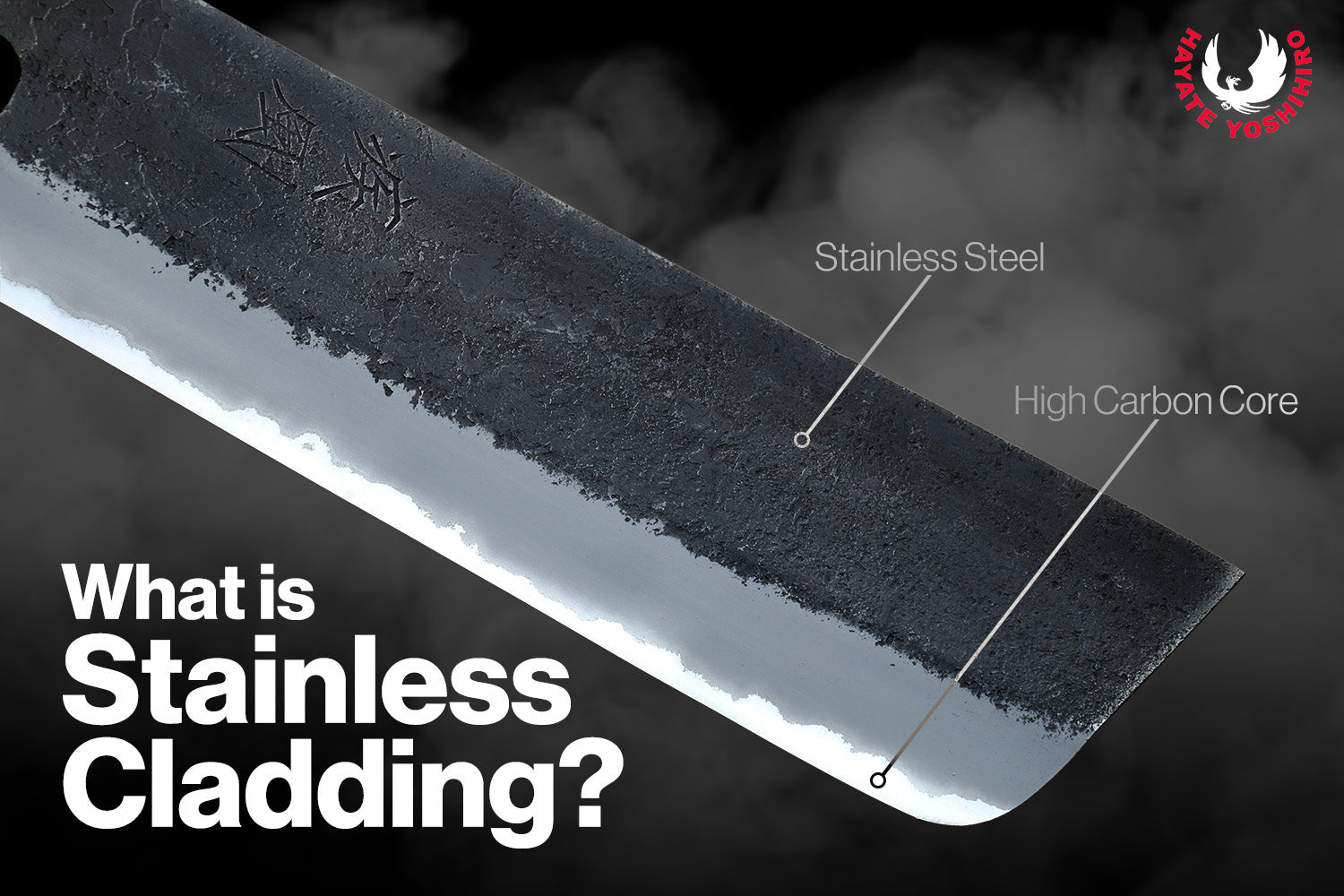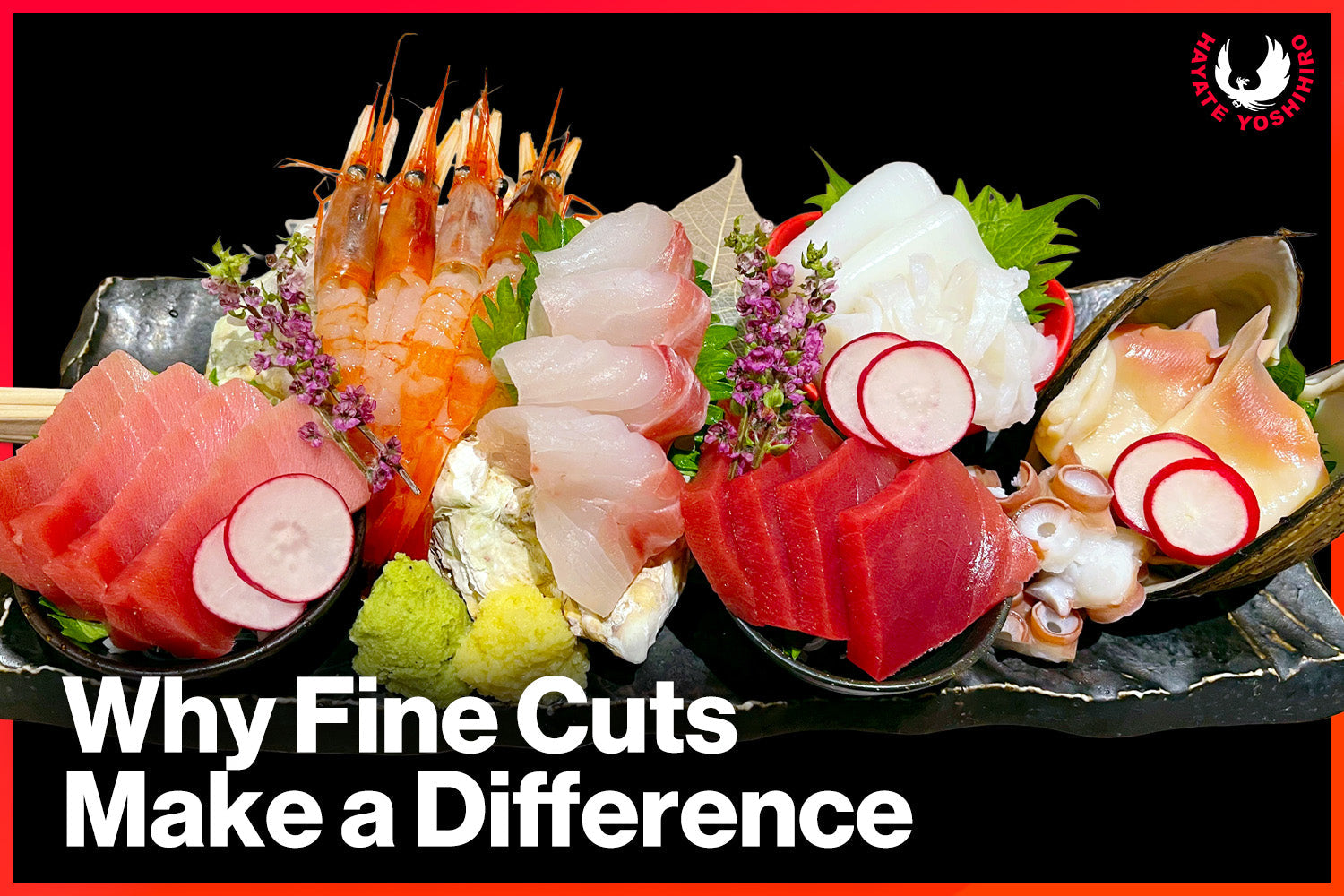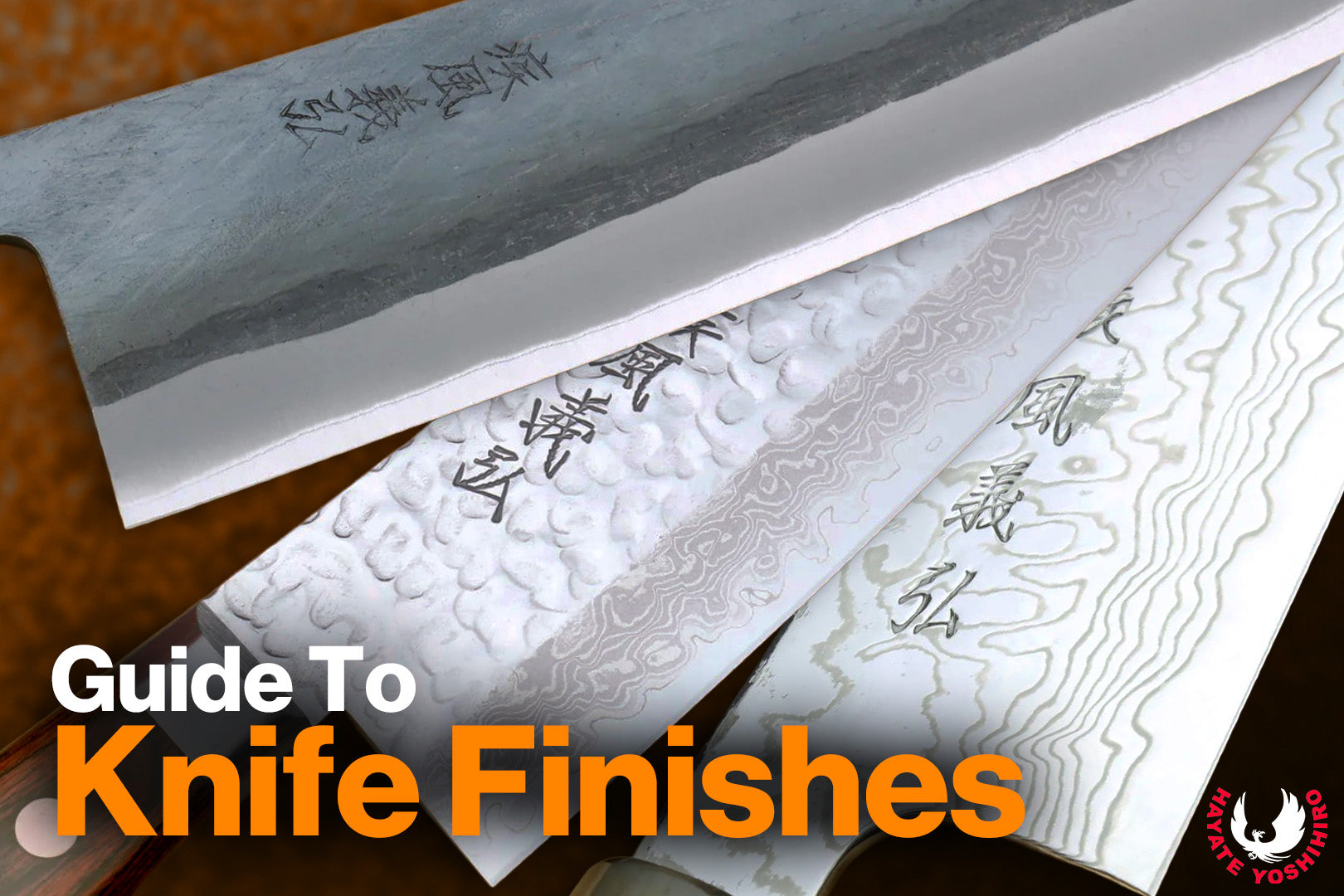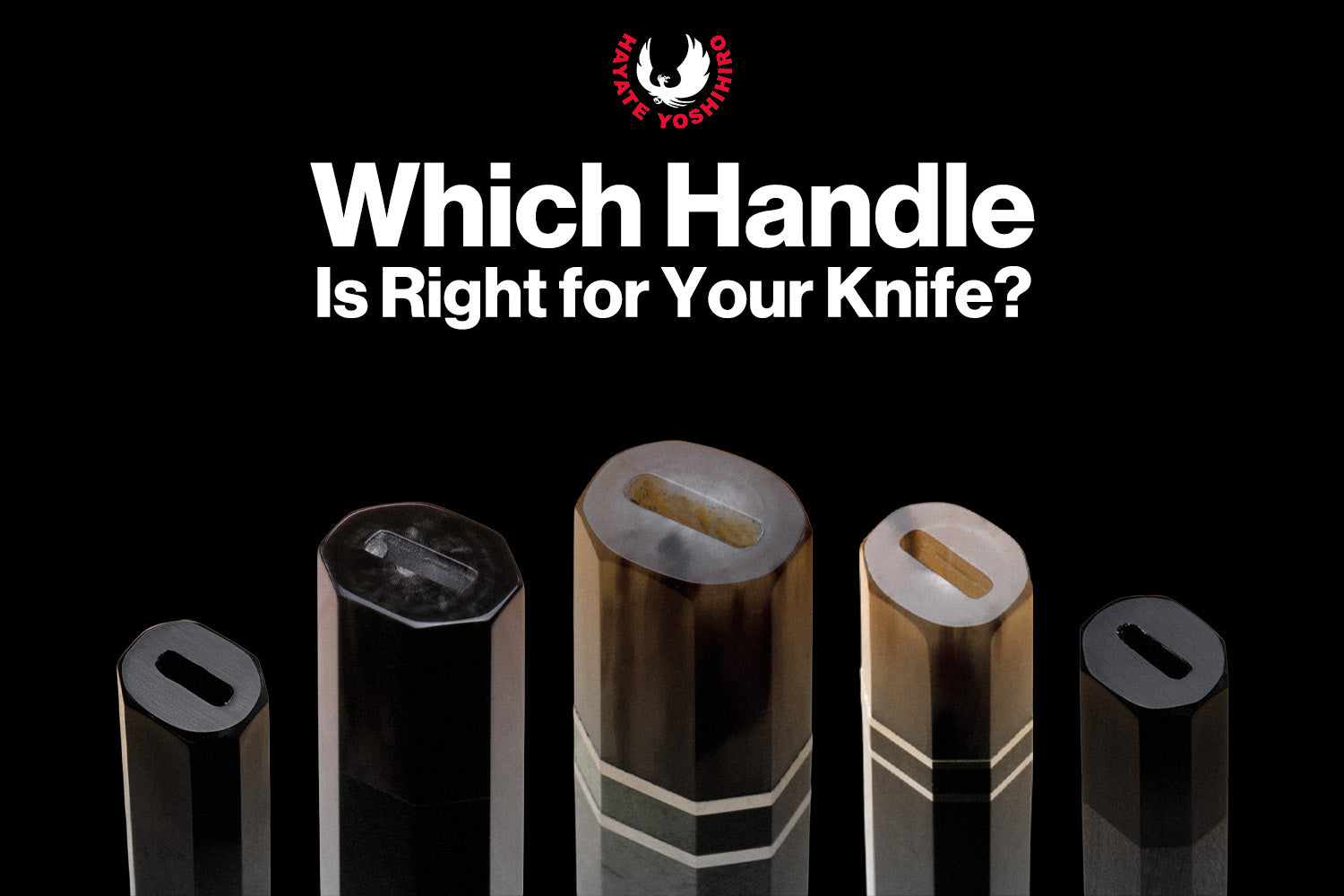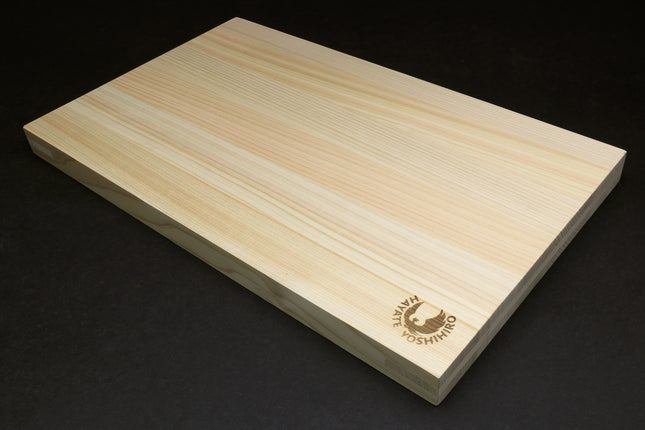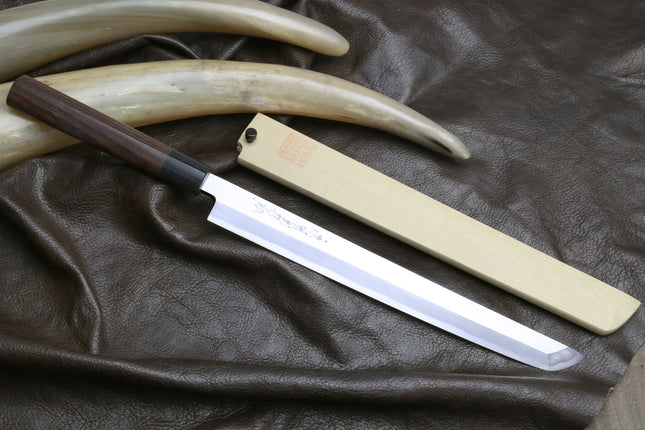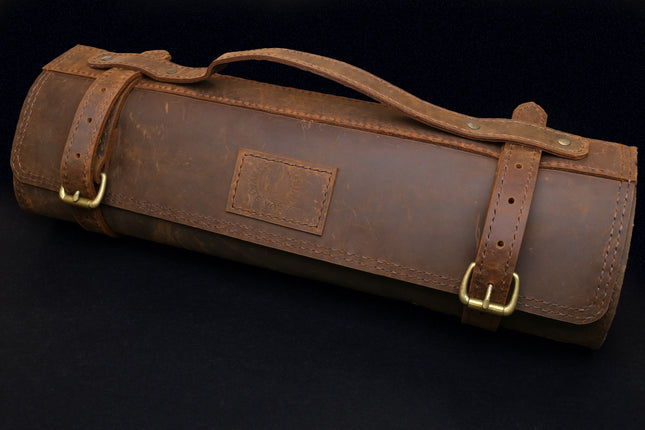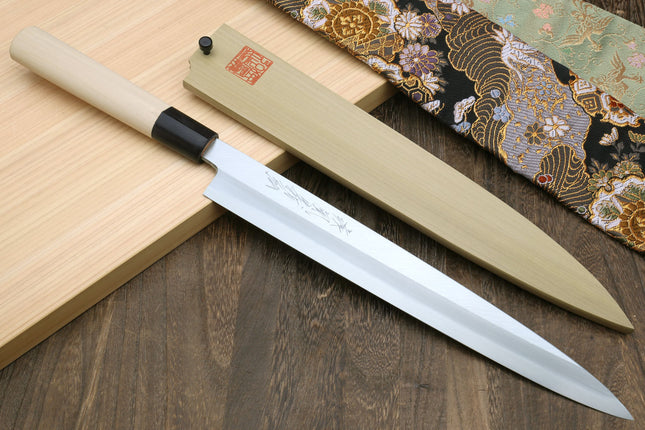High Carbon Steel Explained: White Steel, Blue Steel, and Super Blue
- by Yoshihiro Cutlery
- 13 min reading time
High carbon steel is highly regarded in Japanese knife making for its sharpness and edge retention. Unlike stainless steel, which contains at least 12% chromium to resist rust, high carbon steels like White Steel, Blue Steel, and Super Blue are crafted to enhance cutting performance. In this guide, we’ll break down the differences between each type to help you choose the one that best suits your needs.
High carbon steel is highly regarded in Japanese knife making for its sharpness and edge retention. Unlike stainless steel, which contains at least 12% chromium to resist rust, high carbon steels like White Steel, Blue Steel, and Super Blue are crafted to enhance cutting performance. In this guide, we’ll break down the differences between each type to help you choose the one that best suits your needs.
What Is High Carbon Steel?
High carbon steel is a type of steel that typically contains between 0.6% and 1.7% carbon by weight. This elevated carbon content gives the steel excellent hardness and the ability to take on a razor-sharp edge — qualities highly prized in knife making.
Compared to stainless steel, high carbon steel is easier to forge. Stainless steel contains elements like chromium, which increase its resistance to rust but also make it more difficult to work with. Stainless must be heated to much higher temperatures — around 1050°C — to become soft enough to forge, while high carbon steel typically becomes workable at around 850°C, depending on the specific alloy. This lower forging temperature and the relative purity of high carbon steel (with fewer alloying elements) make it more responsive and predictable during the forging process.
Because it lacks the additives that make steel "stainless," high carbon steel is also much easier to sharpen. It responds quickly to whetstones and can be honed to a fine edge with less effort than stainless counterparts. This makes high carbon steel a favorite among professionals and enthusiasts who value performance and precision in their blades.
The Main Differences: White Steel, Blue Steel, and Super Blue
White Steel, Blue Steel, and Super Blue Steel are all high-quality high carbon steels known for their sharpness and cutting performance. While each type has subtle differences in composition, the actual performance difference between them is much smaller than people often assume. The most important factor in a knife's quality isn’t the steel alone — it’s the craftsmanship behind it.
White Steel is pure and easy to sharpen, making it perfect for tasks that require precision, like slicing sashimi. It's responsive and can take on an incredibly fine edge, but it’s also more delicate, especially in its higher carbon forms.
Blue Steel adds small amounts of tungsten and chromium to improve edge retention and durability. It’s slightly harder to sharpen than White Steel but holds its edge longer, making it great for general kitchen use.
Super Blue Steel includes even more alloying elements like vanadium to increase wear resistance. While it sounds like an upgrade on paper, it’s actually much more difficult to forge well. The higher carbon content and added elements make it a risky choice if not treated with extreme skill. In fact, many people chase Super Blue Steel thinking it’s the best — but end up with a knife that doesn’t perform the way they expected because the craftsmanship wasn’t there.
In reality, all three of these steels are excellent. The real difference comes from the hands that forged them. A well-made White Steel knife will easily outperform a poorly forged Super Blue knife. Instead of choosing based purely on steel type, it’s better to focus on the quality of the blade overall — how it was forged, heat-treated, and finished. That’s what truly brings the steel to life.
White High-Carbon Steel: #1 and #2
White Steel (Shirogami) is one of the most widely used and respected materials in traditional Japanese knife making. Known for its purity and ability to take on a razor-sharp edge, it’s also extremely stable and easy to forge. Many blacksmiths have worked with White Steel for decades — it’s familiar, reliable, and delivers consistent results when handled properly.
Because of its simple, clean composition and low alloy content, White Steel responds predictably to heat treatment. This makes it easier to forge than more complex steels, which require higher temperatures and stricter controls. With White Steel, there’s less room for error, especially in the hands of an experienced craftsman. It's a material that consistently produces high-performance blades with excellent cutting feel and edge clarity.
Benefits of White Steel
White Steel is ideal for clean, precise cuts — especially in traditional Japanese cuisine, where knife control and presentation matter. It sharpens quickly and easily, making it perfect for delicate tasks like filleting or paper-thin vegetable slicing. And because so many knifemakers are familiar with this steel, you can usually trust that the forging will be done right.
What Sets White Steel #1 and #2 Apart?
White Steel comes in two main types, and while the difference between them is subtle, it does matter in terms of performance and risk:
White Steel #2: With slightly less carbon, White Steel #2 is more forgiving — both in use and in the forge. It’s easier to sharpen, less brittle, and tends to be more stable during manufacturing. For many, this balance of sharpness, ease of maintenance, and reliability makes it a go-to steel for both professionals and serious home cooks.
White Steel #1: This version has a higher carbon content, which allows for an even sharper edge and slightly longer edge retention. However, the increased carbon also makes it more brittle and harder to sharpen — and more sensitive during forging. Even experienced blacksmiths need to be extra careful with White #1, as the margin for error is smaller.

Blue High-Carbon Steel: #1, #2, and Super Blue
Blue Steel (Aogami) is a high carbon steel enhanced with small amounts of tungsten and chromium. These additions improve wear resistance and overall toughness, making it a solid choice for demanding kitchen environments. However, the differences between Blue Steel and White Steel are often overstated. While Blue Steel offers a slight performance edge in some areas, it comes with trade-offs — especially when it comes to sharpening and cost.
Why Choose Blue Steel?
The main appeal of Blue Steel is its added toughness. Tungsten is the key element that sets it apart, giving the blade more strength and resistance to wear. That said, Blue Steel does not dramatically outperform White Steel in edge retention — the difference is subtle. In return for that added durability, you’ll find that sharpening Blue Steel is noticeably more difficult due to its harder alloy composition. Compared to White Steel, it takes more time, more effort, and more skill to maintain.
In short, Blue Steel is not a direct upgrade over White Steel. It's a different tool for different needs. And while it’s often marketed as a premium option, its real advantage comes from how it’s used — not just the name alone.
What Makes Blue Steel #1, #2, and Super Blue Different?
Instead of thinking of these as a tier list, it's better to think in terms of forging difficulty and intended use. The real comparison isn't Blue Steel #1 vs. #2 — it's more about comparing Blue Steel #2 to White Steel #2, or Blue Steel #1 to White Steel #1. These pairs are more similar in performance and purpose — you'll find that chart at the end of this article.
Blue Steel #2: With slightly lower carbon and a good balance of toughness and edge retention, this is often the most versatile and reliable of the Blue Steels. It’s a solid match for professionals looking for durability without too much sharpening frustration.
Blue Steel #1: Higher carbon content gives it more potential for sharpness, but also makes it more brittle and harder to sharpen. It's more sensitive during forging, and can be less forgiving if not treated properly.
Super Blue Steel: Often misunderstood. Yes, it has the highest carbon content and additional elements like vanadium for increased wear resistance, but it’s extremely challenging to forge correctly. The margin for error is razor-thin — which is why only a few skilled blacksmiths choose to work with it seriously. Despite its name, Super Blue is not automatically “better.” It costs more, is much harder to sharpen, and the quality depends heavily on expert craftsmanship. When done right, it can be incredible. When done poorly, it can fall far below even simpler steels.

Ultimately, all of these steels — White, Blue, Super Blue — are on equal footing when crafted with skill. The key isn’t just choosing the right steel. It’s choosing a knife that was forged and finished with care. Don’t let the steel name alone guide your decision — the true performance comes from the hands that shaped it.
How to Choose the Right High Carbon Steel Knife
Choosing the right high carbon steel knife isn’t just about what you cook — it’s about how you use your knife, how you care for it, and what kind of experience you have with sharpening. While all high carbon steels can offer incredible performance, they come with different trade-offs in maintenance, durability, and cost.

1. Consider Your Sharpening Skill (Not Just Cooking Skill)
If there’s one factor that should guide your choice, it’s how comfortable you are with sharpening. High carbon steel knives are responsive to whetstones — but the harder the steel, the more precise your technique needs to be. White Steel is easier to sharpen than Blue Steel, and Super Blue is by far the most challenging. If you’re new to whetstone sharpening or only sharpen occasionally, go for steels like White #2 or Blue #2. They sharpen quickly, perform well, and won’t punish small mistakes. If you've been sharpening regularly for a few years and feel confident with burr control, angle consistency, and polishing, you can start exploring higher-carbon options like White #1 or Blue #1. And if you’ve got 5+ years of hands-on sharpening experience, Super Blue might be worth it — just know that it demands precision, patience, and a real commitment to upkeep.
2. Think About How You Actually Use Your Knife
It’s also important to match your knife steel to your real-life kitchen habits — not just your cooking goals. If you're rough on your knives, do a lot of twisting cuts, or prep on hard surfaces, brittle steels like White #1 or Blue #1 aren’t ideal. These steels offer incredible sharpness but can chip under stress. On the flip side, if you cut with care, keep your board clean, and maintain good technique, these same steels can give you unmatched precision. Be honest with yourself — your knife will thank you for it.
3. Sharpening Frequency and Maintenance
All high carbon steels need regular maintenance. They're not rust-resistant, and the sharper you want them, the more often you’ll need to touch them up. If you’re the kind of person who enjoys sharpening and doesn’t mind doing it often, you’ll get great results from any of these steels. But if you’d rather sharpen as little as possible, choose something that won’t fight you — like White #2 or Blue #2. Super Blue can be extremely rewarding, but it’s much tougher to sharpen and far less forgiving if your technique slips even a little.
4. Budget Matters — And It’s Not Just the Knife Cost
High carbon steel knives come at a wide range of price points, but there’s more to consider than just the up-front cost. Super Blue, for example, is expensive not only because of the steel itself, but also because it’s harder to forge and maintain. You’ll need high-quality sharpening stones, more time, and maybe even professional sharpening services. If you're on a budget — or if you're still developing your sharpening skills — it makes more sense to choose something like White Steel #2 or Blue Steel #2. They’re easier to care for, more affordable, and still deliver fantastic results with proper use.
In the end, there’s no “best” steel — just the one that fits your skills, habits, and budget. A well-forged White Steel #2 in the hands of someone who sharpens well can easily outperform a Super Blue that isn’t properly maintained. Know your strengths, be realistic about your workflow, and choose a knife that’ll work with you, not against you.
Knife Maintenance Tips for High Carbon Steel
High carbon steel knives need more care than stainless, but the payoff is unmatched performance. Here’s how to keep yours in top shape:
- Dry immediately after use to prevent rust.
- Store in a dry place — use a saya cover, knife block, or magnetic strip.
- Oil occasionally with mineral oil to protect the blade, especially during long storage.
-
Use high-quality whetstones for sharpening — this part is critical. Not all stones are created equal. We don’t recommend double-sided or combo stones; they’re often made with lower-grade materials that can damage your blade. The quality of your whetstone is just as important as the knife itself.
Check out our recommended Premium Sharpening Stones — each one is designed to bring out the best in high carbon steel. If you're not sure what to choose, here's our guide on what whetstones to get.
Trusted Quality from Yoshihiro
Every high carbon steel knife at Yoshihiro is handcrafted by expert artisans in Japan. Whether you're looking for the pure sharpness of White Steel or the long-lasting power of Blue Steel, we’re here to help you find the right blade for your needs.
Explore our full collection of high carbon steel knives, including single-edged White Steel, double-edged White Steel, single-edged Blue Steel, double-edged Blue Steel, and more. Each knife is handcrafted using traditional techniques and built for lasting performance.
Featured Products
Share information and details about this collection









